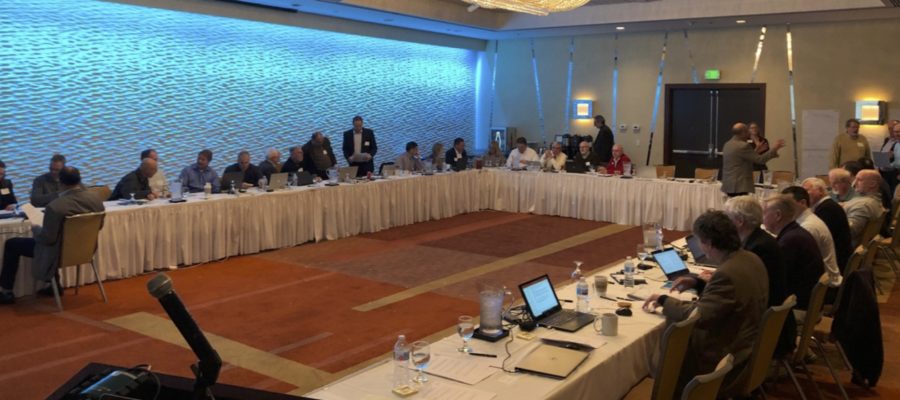For buildings designed to current U.S. standards, in seismic events, do structural engineers expect damage in building diaphragms, or not? The recent Steel Diaphragm Innovation Initiative (SDII) workshop revealed that there is no consensus on this question at current time. Structural engineering does not currently have clarity nor consistent expectations on the performance of building diaphragms during earthquakes. This and many other challenges were discussed at the recent SDII Workshop and are summarized in a new report on the workshop released today. Get the full report from the DSpace collection of CFSRC reports, or read the Executive summary that follows:
Executive Summary
Researchers from SDII led a one day workshop in Burlingame California on 10 January 2019 for thirty-five engineering participants to discuss progress to date in the SDII effort, receive feedback on existing and planned future work, and to collectively identify key challenges and innovation opportunities related to the seismic performance of buildings employing bare or concrete-filled steel deck diaphragms.
The SDII research team summarized current efforts in structural experiments across a variety of scales, modeling across scales, codes and standards for demand and capacity, and innovation opportunities. The presentation slides are provided in Appendix 1 and 2. For bare steel deck diaphragms existing testing, new testing, and simulation have been employed to develop improved design provisions for AISC 342/ASCE 41, AISI S310, AISI S400, and NEHRP/ASCE7. These new provisions recognize the conditions in which bare steel deck diaphragms can provide adequate ductility, deformation, and residual force capacity – and when these performance conditions are met, provide appropriate reductions in diaphragm demands. For concrete-filled steel deck diaphragms, new testing including: monotonic pushout tests, cyclic pushout tests, and full-scale cantilever diaphragm tests are all underway. Combined with existing testing the results are providing improved stiffness and strength provisions for AISI S310, and will also impact AISC 341, AISC 360, and ASCE7. The workshop participants were brought up to speed on all of these issues and more, expressed support for the SDII effort, and then engaged in an active exercise to explore challenges and opportunities in steel deck diaphragms.
Workshop participants were provided a questionnaire in advance and given time during the meeting to individually answer ten questions related to challenges and nine questions related to innovation (see Appendix 3). Participants provided their complete response to the SDII team for later analysis, and then during the workshop engaged in small groups to develop an initial set of priorities. The prioritized challenges developed during the workshop covered: codification needs related to capacity prediction; improved models, particularly for diaphragm demands; workflow and practice-oriented (time and fee) challenges, detailing challenges, and how to better handle irregularities. The deeper analysis of the complete participant responses highlighted two major additional specific challenges: (1) even the nation’s most accomplished seismic building engineers do not have a consistent understanding of whether or not inelasticity is expected in the seismic response of building diaphragms, (2) while some engineers rely extensively on supplemental reinforcement in concrete-filled steel deck diaphragms both to improve the strength and provide the necessary chord and collector capacity, other engineers have specific concerns about confinement in these systems and will not employ them in their designs.
A similar process was followed during the workshop and in later analysis for the questions related to innovation. During the workshop the prioritized points regarding innovation centered on three groups: technological innovation, overall innovation, and engineer support/workflow innovations. The primary ideas for technological innovation focused on improved connectors, and the potential for the integration of discrete energy dissipation devices (structural fuses). A significant point of discussion with respect to innovation is the need to have strong engineering support and efficient and simple workflows. Engineers found that the tools to model diaphragms were lacking in nearly every regard, and innovation is needed. A deeper analysis of the participant responses identified that innovation in diaphragms is hampered by a definitive lack of knowledge with respect to the behavior of building systems with inelasticity in both the vertical and horizontal lateral force resisting system. If this behavior is understood then software improvements (that support design) and specific technological innovation (isolation, improved damping, optimized deck profiles) can have impact.
Get the full report.
